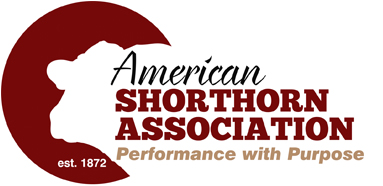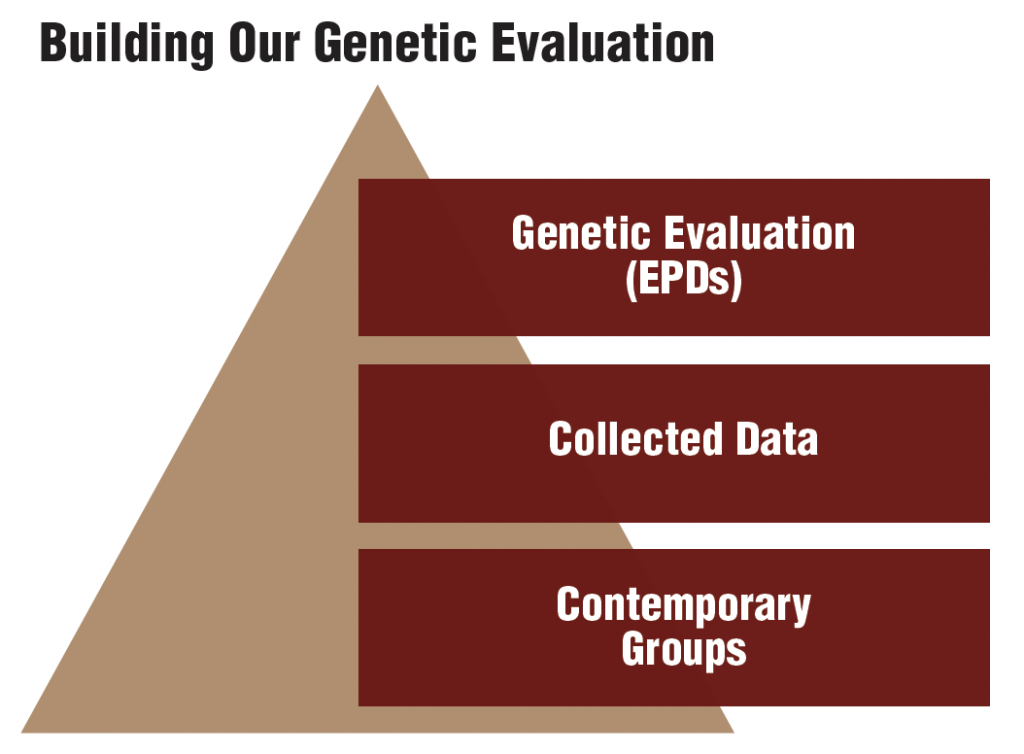I kicked off 2019 by beginning this series on the selection index lineup we have available to Shorthorn breeders and their customers. In the January issue, a basic overview of selection index technology was provided in Part 1. With the concepts of how selection indices are constructed laid out, it’s time to go deeper into the specific indices that are available in the Shorthorn genetic evaluation. In this installment, I’m going to provide you some more information on two of our selection indices; $Calving Ease and $Feedlot.
$Calving Ease ($CEZ)
The $Calving Ease index in our genetic evaluation is the simplest in terms of the number of traits included. This index is designed to identify the bulls that are best suited for use in breeding heifers. Bulls with a high $CEZ value are the bulls that are expected to sire offspring that calve unassisted and then grow out to a moderate mature weight. To meet that goal, the EPDs included in $CEZ are Calving Ease Direct (CED) and Yearling Weight (YW). CED is weighted heavily in this index, while YW is taken into consideration as an indicator trait for mature weight, which we do not have an EPD for currently. Higher growth cattle (the ones with really high YW EPDs) will see their $CEZ impacted more heavily than moderate YW EPD cattle, as the index is designed to select for cattle that will reach a moderate mature weight. Currently, the average of all non-parent cattle in the Shorthorn database for $CEZ is 28.10. Cattle in the top 25% of the breed have a $CEZ of 36.56 or greater, while cattle in the top 10% will boast a 46.10 or greater $CEZ.
$Feedlot ($F)
For those of you who retain ownership of feeder cattle, or might have customers that do so, the $Feedlot index is designed with that production scenario in mind. Sires that excel in $F are expected to sire feeder calves that will grow rapidly and produce a carcass that can grade very well on a quality scale. The $Feedlot has a few more pieces to it when compared to $Calving Ease. The EPDs included in $F include CED, Weaning Weight (WW), YW, Fat, Ribeye Area (REA), and Marbling (MB).
I’m sure the first thing that catches your attention from this list is the inclusion of CED. CED is incorporated into $F because even though this is a terminal index with growth and end product emphasized, completely ignoring calving ease could lead to dystocia problems, even in a terminally-focused operation. Therefore, CED is included in $F, albeit in a smaller emphasis than the other traits involved. As you would expect, growth and carcass merit are highlighted in $F. Of all of the carcass traits (Fat, REA, and MB), MB is more heavily emphasized than the others, as quality-based premiums and improving carcass quality grade are increasingly important in the industry. Both growth traits are more heavily emphasized in $F than CED and the carcass traits. After all, even at harvest, cattle are still sold by the pound, and cattle that grow are more likely to produce heavier (and more valuable) carcasses. Yearling Weight is used as an indicator trait for Carcass Weight, with the reasoning being that when $F was developed several years ago, there was no Carcass Weight EPD to include. Unfortunately, implementing Carcass Weight in place of YW is not as simple as taking one number out and putting another in.
As of the time that this was written, the average of non-parent Shorthorn cattle for $F is 52.35. For an animal to be in the Top 25%, the $F must be 54.51 or greater, and a $F of 57.04 qualifies in the Top 10% of non-parent Shorthorns. Hopefully, having some insight into what goes into our stable of selection indices gives you a better idea of how they might be beneficial to use in your breeding programs. It’s hard to use something when you don’t understand how it works, whether it is a power tool, an electronic device, or a selection index. In the next issue of Shorthorn Country, Part 3 of this series will tackle the $British Maternal Index, as well as the $Fescue.
Written by Matt Woolfolk, ASA Director of Performance Programs





![[ Random Image ]](/wp-content/themes/shorthorn/headers/header1.jpg)





